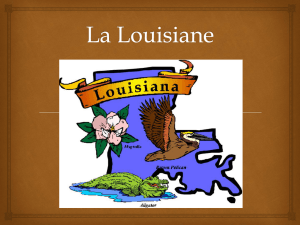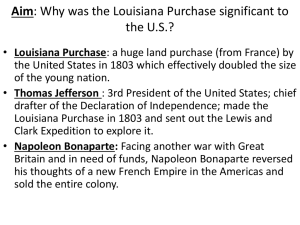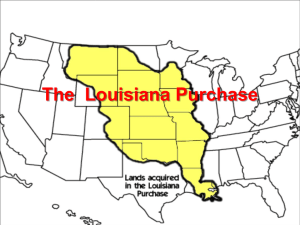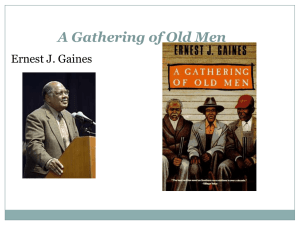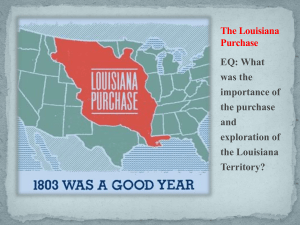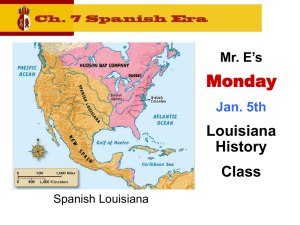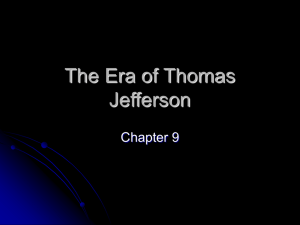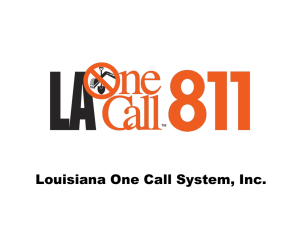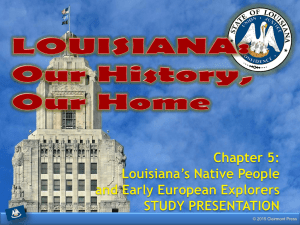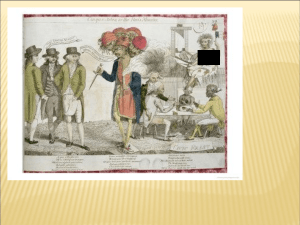Louisiana: Our History, Our Home
advertisement
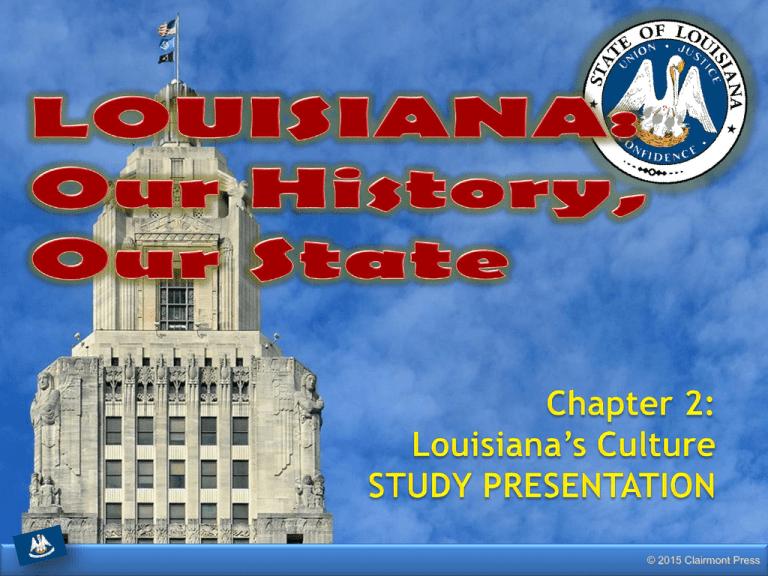
© 2015 Clairmont Press Section 1: What is Culture? Section 2: Cultural Regions Section 3: People and Culture Section 4: Forms of Cultural Expression 2 Section 1: What Is Culture? Essential Question: • What influences the culture of Louisiana? 3 Section 1: What Is Culture? What terms do I need to know? • culture • architecture • cultural diffusion 4 Introduction Many people say that Louisiana has a distinct culture or is home to some of the most distinctive groups of people in all of the United States. In order to evaluate this claim, we must first define culture and understand how it helps to make a place or its people special. 5 Louisiana’s Culture Culture is the way of life of a group of people. It is shaped by ideas, beliefs, customs, and behavior. Culture is expressed through religious beliefs, architecture (the style of buildings), art, literature, clothing, music, food, work, and where people live. Hunting and fishing are abundant in North Louisiana culture. Fishing has shaped the culture of coastal Louisiana. 6 Cultural Diffusion Cultural diffusion is when new ideas and practices are blended with other ideas and practices, forming completely new cultural expressions over time. Louisiana has such a rich history of cultural diffusion because over three centuries, people from various backgrounds came here, bringing with them new ideas and practices. 7 Section 2: Cultural Regions Essential Question: • What are the cultural regions of Louisiana? 8 Section 2: Cultural Regions What terms do I need to know? • cultural anthropologist • urban • Acadians 9 Introduction Just as Louisiana has natural regions, it also has cultural regions. The region and similarities among people who settled an area help to shape a culture. Cultural anthropologists (scholars who study communities and help identify areas where similar pasts and patterns make a region distinct from its surroundings) interpret cultural regions. Louisiana is divided into five culture regions: • • • • • Sportsman’s Paradise Crossroads Cajun Country Plantation Country Greater New Orleans 10 Culture Regions of Louisiana 11 Sportsman’s Paradise Sportsman’s Paradise is the northernmost cultural region of Louisiana, and it gets its name because of its rolling hills, forests, and lakes that provide outdoor recreation like hunting and fishing. Most people who settled this region were Anglo-Saxon or Celtic, and migrated from nearby states, which means that they are more culturally similar to nearby states than South Louisiana. Shreveport-Bossier City is the region’s largest urban (city) area. Though the two cities are separate, they blend into one single urban culture. The most populous area of northern Louisiana is Monroe-West Monroe. Water sports, such as this on the Red River, are important for the tourism industry 12 Crossroads The Crossroads region stretches across the center of the state, and serves as a crossroads between the northern and southern portions of the state. The region’s largest urban centers are Alexandria and Pineville; the towns are separated by the Red River. The Crossroads region also holds Louisiana’s oldest city: Natchitoches. Today, Natchitoches is known for its architecture, charming city center, and beautiful natural surroundings. The Alexandria Museum of Art preserves, shares, and promotes the visual arts in central Louisiana. 13 Cajun Country The first European settlers here were the Acadians (Cajuns for short), French Canadians that arrived in the 1760s. In this region, the Cajun culture is divided into prairie (where residents rely on farming and raising livestock) and wetland (where fishing and trapping are popular) areas. The Prairie Acadian Cultural Center is in Eunice, and a Wetlands Acadian Center is in Thibodaux. The oil industry brought many jobs in oil production and related industries to Acadians. These new industries led to the development of urban areas, including Houma, Lafayette, Morgan City, and Thibodaux. The Acadian Cultural Center in Lafayette tells stories of the origins, migration, settlement and culture of Cajuns and other area groups. 14 Plantation Country Plantations used to dominate the region’s geography and culture. The profits gained from the cultivation of sugar and cotton made these plantation houses quite impressive. Chemical companies now dominate the work field in this region. Baton Rouge is the state’s capital—it is home to the State Capitol, headquarters for many state agencies, and Louisiana State University. Bell tower at LSU, the flagship university of the state 15 Greater New Orleans New Orleans forms the heart of the Greater New Orleans region. New Orleans’ port and tourism are its most important economic activities. Architectural history, cuisine, and music are some of the city’s most celebrated cultural traditions. Jefferson Parish and its cities of Metairie and Kenner are considered part of the Greater New Orleans area, as well as cities, like Covington and Slidell, located in the Northshore. Weekends in New Orleans are abuzz with citizens and tourists. 16 Section 3: People and Culture Essential Question: • How have different ethnic groups influenced the culture of Louisiana? 17 Section 3: People and Culture What terms do I need to know? • • • • • • ethnic group African American Anglo Creole Hispanic Isleño 18 Introduction In the past and present, Louisiana has been shaped by the diversity of its people. Different ethnic groups provide the state with cultural influences. Ethnic groups are group of people who are or who consider themselves to be different from other members of their community based on several factors. People from the same ethnic group often come from the same place in the world or share a racial identity. Czech quilting, Louisiana Folklife Festival 19 Acadians The Acadians were French migrants who first lived in what is now Canada. The Acadians settled into Louisiana in the 1760s. Thousands of Acadians still speak Creole French, and others share a similar dialect. Their music and preparation of food makes them one of the most recognizable ethnic groups in the US. 20 African Americans African American refers to all people descended from the Africans brought to North America during its colonial and early national periods. The first large groups of African Americans were brought from Africa to Louisiana between 1719 and 1721 to work as the colony’s main workforce. After Louisiana became a state in 1803, new slaves came into the state from other states rather than from abroad. The cultures of the descendants of Africans and the descendants of slaves brought to Louisiana during the colonial period differ. 21 Anglos Anglo refers to people who came into Louisiana from the American colonies established by the English. Large numbers of Anglos began coming into Louisiana in the 1780s. They settled in the northern region of the state and raised cotton on small farms. What separates Anglos from other early Louisiana settlers is that they spoke English and were Protestant. Other Anglos settled in New Orleans and were called Les Américains by the descendants of New Orleans’ settlers. 22 Creoles Creole refers to the descendants of Louisiana’s earliest settlers, though the term has had many different meanings over time. St. Landry Parish is home to several Creole of color communities. Some continue to speak French, but most all today are English speakers. 23 Germans Most German settlers were farmers who settled in an area known as the German Coast on the shore of Lake Pontchartrain. Early Germans did not retain their language and soon blended with the French culture that dominated the region. 24 Hispanics The first large groups of Hispanics (Spanish-speaking people) came when Louisiana became a Spanish colony in the 1760s. Isleños are members of the most prominent group of Hispanics that the Spanish government brought over for population growth from the Canary Islands. Isleños keep their cultural traditions alive through singing dècimas. Another group of Spanish speakers came from the Málaga region of Spain, and founded the city New Iberia. Cuban exiles settled in New Orleans in the 1960s, but in more recent times Spanish speakers have come from Latin American countries, like Mexico and Honduras. 25 Italians Italians began arriving in Louisiana in the nineteenth century. Many came from rural areas and had farming experience. If it was affordable, some Italians set up farms outside New Orleans and sold their produce in the city. A large group of descendants now live in Independence in Tangipahoa Parish. 26 Native Americans At the time of French settlement there were seven groups of Native Americans who lived in what is now Louisiana. Today there are four groups recognized as sovereign Indian nations: the Chitimacha, the Jena Band of Choctaw, the Coushatta, and the Tunica-Biloxi. Other Native American groups have sought federal recognition but have failed to achieve it. The largest of these is the United Houma Nation. 27 Other Ethnic Groups There are numerous other groups who have come to Louisiana over time, including people from China, the Philippines, Vietnam, and Croatia. Small numbers of Chinese came over in the nineteenth century, but eventually these numbers grew enough that they formed a small community, Chinatown. Both Filipino and Vietnamese immigrants have become part of the wetlands culture. Croatian immigrants helped develop the oyster industry. 28 Section 4: Forms of Cultural Expression Essential Question: • How has culture influence the food and music of Louisiana? 29 Section 4: Forms of Cultural Expression What terms do I need to know? • • • • • • gumbo jambalaya zydeco blues jazz Mardi Gras 30 Food Gumbo, a thick soup or stew, is one of the most common foods associated with Louisiana. The food traditions immigrants brought with them shape the way gumbo is made: the French brought roux, Africans brought okra, and Native Americans brought filé. Many people believe the Spanish to be responsible for creating jambalaya, another popular Louisianan dish, that includes rice and some type of meat or seafood. Crawfish, oysters, fish, and shrimp are other foods associated with Louisiana. A sampling of creole foods 31 Music Early explorers described the music created by Native Americans who played drums and sang in their native languages. The French brought the music of Catholic worship with them. Africans brought songs, drumming, and dancing. Over time, these musical traditions merged and changed. 32 Country Music Country music is often associated with the Sportsman’s Paradise and Crossroads regions. Many settlers migrated from nearby states where country music originated. The radio program, The Louisiana Hayride, was broadcast in Shreveport and featured country musicians such Hank Williams, Johnny Cash, and Elvis Presley. Click to hear The Louisiana Hayride from 1955 33 Cajun Music and Zydeco The Cajun Country region is known for two types of music: Cajun music and zydeco. Cajun bands feature a fiddle and an accordion; the accordion was not incorporated into their music until the 1880s when the Germans immigrated. This is an example of cultural diffusion Zydeco bands were created by black Creoles who lived in the rural southwest region. Clifton and Cleveland Chenier were wellknown zydeco performers in the 1950s. Click to hear some zydeco music 34 The Blues Blues is often associated with the Plantation Country region. The songs and chants were created by slaves and later sharecroppers as they worked in the fields. The guitar and harmonica became instruments associated with blues. Blues musicians adopted the electric guitar in the 1940s. Click to hear some blues music 35 New Orleans Music The notable pianist Louis Moreau Gottschalk was born in New Orleans in 1829, and his music was inspired by the area he grew up in. Jazz was created in New Orleans by African American and Italian American musicians merging their music together. New Orleans-bred musicians, like Louis Armstrong, carried this style with them around the country and world, letting the genre evolve over time. Musical traditions merged again, combining both blues and rock and roll. The best known performers of these songs are New Orleans-born musician Antoine “Fats” Domino and Jerry Lee Lewis, from Ferriday Click to hear Jerry Lee Lewis (1952) 36 Festivals Festivals are an important way for people in Louisiana to celebrate and share their culture and heritage. Each year there are more than three hundred festivals in the state’s cities and towns. Ruston Peach Festival 37 Musical Celebrations Dozens of festivals each year celebrate the state’s musical forms, including the New Orleans Jazz & Heritage Festival, which features many types of Louisiana music. Other festivals focus on a single music genre. They include the Baton Rouge Blues Festival, the Zydeco Extravaganza in Opelousas, and Cajun Music Festivals in Mamou and Lafayette. Zydeco Festival, Plaisance 38 Festivals of Agriculture and Industry Festivals were originally developed to celebrate religious holidays or honor saints. Many festivals celebrate the agricultural traditions of the state, including the Andouille Festival in LaPlace, the Cotton Festivals in Bastrop and Ville Platte, the Crawfish Festival in Breaux Bridge, the Rice Festival in Crowley, and the Strawberry Festival in Ponchatoula. Other festivals celebrate the industries that provide jobs in that area: • • • The Cypress Sawmill Festival celebrates Patterson’s history as a logging town. The Blessing of the Fleet honors fishermen (this is celebrated in Chauvin, Dulac, Golden Meadow, Delcambre, and Chalmette). The Shrimp and Petroleum Festival celebrates Morgan County’s seafood industry and its history as a location for oil production. 39 Ethnic Festivals Ethnic festivals honor the backgrounds of those who settled an area. More than a dozen festivals celebrate the culture and history of the Acadians. There is a Greek Festival in New Orleans, a Hungarian Celebration in Springfield, and festivals honoring Italian heritage in Tickfaw, Kenner, and Independence. 40 Mardi Gras Celebrations Mardi Gras is the state’s most famous festival. Its celebrations are for religious reasons, though that is often overlooked. Krewes (individual parade organizations) sponsor Mardi Gras parades and balls during the Carnival season. The Mardi Gras celebration of courir is found in rural areas, where community members gather for a communal gumbo feast. These parades offer an insight into how the people of Louisiana honor special occasions and celebrate their cultural heritage. Mardi Gras Parade, New Orleans, LA 41 Sharing Our Joy Whatever the reason, Louisiana’s people are known for the joyful ways in which they celebrate life. This idea of a unique way of celebrating is referred to as joie de vivre, and it is a tradition carried on by people from all parts of Louisiana. Mardi Gras Krewe Captain 42 Image Credits Slide 1: Chris Miceli on Wikimedia Commons, Public Domain; Slide 2: Ken Thomas (alligator); Jillian.E (Chicot State Park); City of Monroe, LA; Albert Herring (Mardi Gras), Lael Butler (pelican); Jesper Rautell Balle (cajun meal); Susan Adams (Chemin-a-Haut State Park) on Wikimedia Commons; Slide 31: Victor Monsour on Wikimedia Commons; Slides 12-16, 19, 37, 41, 42: images copyright Reginald Lankford, Clairmont Press; Image Credits Slide: Edd Prince on Wikimedia Commons; all others public domain Shown here: Fontainebleau State Park Return to Main Menu 43
